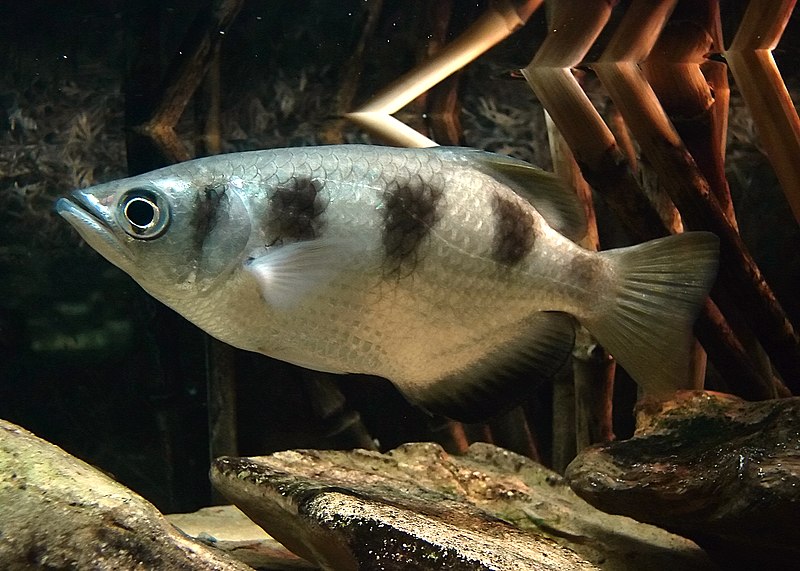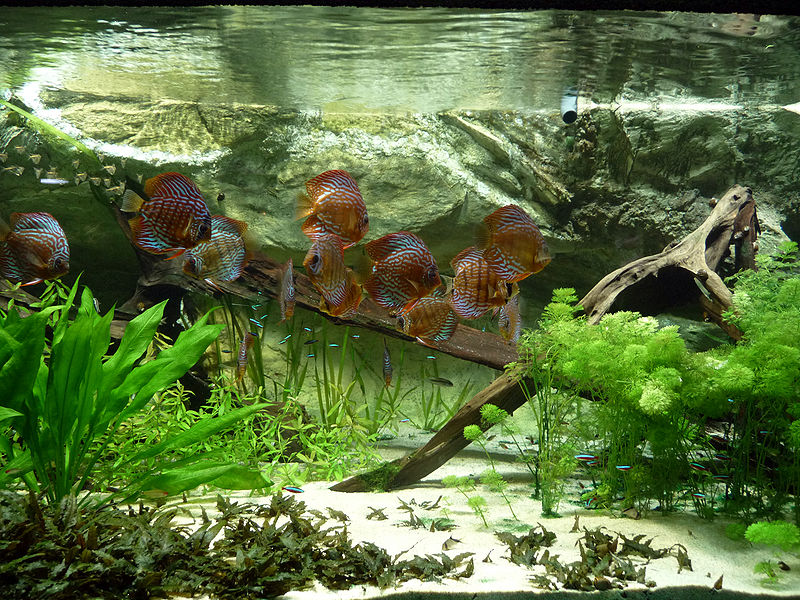 Hello, Frank Indiviglio here. In the early 1980’s, I had the good fortune of being chosen to help set up the exhibits in Jungle World, a new Bronx Zoo building highlighting Southeast Asian wildlife. Leaf Insects, Sunbirds, Marsh Crocodiles, Giant Soft-shell Turtles, Proboscis Monkeys, Tapirs…all came under my care, but it was a mangrove marsh exhibit that became my favorite. It housed a variety of unique animals, including Mudskippers, Fiddler Crabs and Monos, but the real stars were a school of Banded Archerfish (Toxotes jaculatrix). Visitors especially enjoyed watching me service the exhibit…the Archerfishes would invariably squirt water at the movement of my eyes as I looked down at them, and they never missed!
Hello, Frank Indiviglio here. In the early 1980’s, I had the good fortune of being chosen to help set up the exhibits in Jungle World, a new Bronx Zoo building highlighting Southeast Asian wildlife. Leaf Insects, Sunbirds, Marsh Crocodiles, Giant Soft-shell Turtles, Proboscis Monkeys, Tapirs…all came under my care, but it was a mangrove marsh exhibit that became my favorite. It housed a variety of unique animals, including Mudskippers, Fiddler Crabs and Monos, but the real stars were a school of Banded Archerfish (Toxotes jaculatrix). Visitors especially enjoyed watching me service the exhibit…the Archerfishes would invariably squirt water at the movement of my eyes as I looked down at them, and they never missed!
Natural History
Seven archerfish species have been described. They range from India to Malaysia and Australia, ofrten in association with brackish water mangrove swamps, but most also enter freshwater and the ocean. Archers and other species that move between salt and fresh water for other than breeding purposes are known as amphidromous fishes.
At least 1 species, the 5 inch-long Smallscale Archerfish (Toxotes microlepis), spends most of its time in the freshwater. The giant of the genus is the 16 inch-long Largescale or Spotted Archerfish (T. chatareus). Both occasionally appear in the pet trade, where they are often confused with the Banded Archerfish (please see below). Read More »
 That Fish Blog – Aquarium Advice and Information
That Fish Blog – Aquarium Advice and Information




